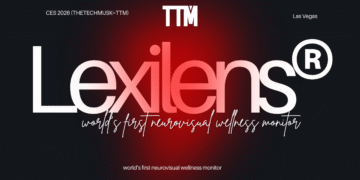In today’s rapidly evolving technological landscape, enterprises are increasingly adopting serverless computing and containerization as they seek to streamline application development and deployment. However, with the benefits come challenges, particularly in managing the complexity associated with these technologies. In this article, we will explore the complexities of implementing serverless vs containers in enterprise environments and discuss strategies for effectively managing them.
Understanding the Complexity
When it comes to enterprise adoption of serverless and containers, unique complexities arise. Enterprises must consider various factors such as security, governance, compliance, integration with existing systems, and organizational readiness. These complexities can make the implementation process challenging but can be mitigated with the right approach.
Serverless in the Enterprise
Serverless computing offers significant advantages for enterprises. It enables auto-scaling, reduces infrastructure management, and allows developers to focus on core business logic. However, enterprise adoption of serverless introduces complexities in areas such as security, data privacy, and compliance. Robust security measures and compliance frameworks need to be in place to ensure data protection and regulatory compliance.
Containers in the Enterprise
Containerization, with its advantages of portability and consistent deployment, is well-suited for enterprise environments. Containers enable the adoption of microservices architectures, scalability, and efficient resource utilization. However, challenges related to networking, orchestration, and container security must be addressed in the enterprise context. Implementing container security measures and adopting orchestration platforms like Kubernetes can help manage these complexities effectively.
Managing Complexity: Best Practices and Strategies
To effectively manage the complexities of serverless and containers in enterprise environments, organizations can implement several best practices and strategies. By following these guidelines, enterprises can navigate the challenges and streamline the adoption of these technologies.
1. Comprehensive Governance and Security Framework
Implementing a comprehensive governance and security framework is crucial when adopting serverless containers in the enterprise. This framework ensures that proper controls, policies, and security measures are in place to govern the usage of these technologies. It includes establishing access controls, defining data privacy protocols, and implementing encryption standards. Regular security audits and vulnerability assessments should be conducted to identify and address any potential risks.
2. Training and Upskilling
Investing in training and upskilling of development and operations teams is vital for the successful implementation of serverless and containers. Enterprises should provide comprehensive training programs to help their teams understand the intricacies of these technologies and build the necessary skills to leverage their full potential. Training should cover aspects like serverless architecture, containerization, container orchestration platforms, and best practices for deployment and management.
3. Infrastructure as Code (IaC)
Infrastructure as Code (IaC) is an approach that allows for the automation and reproducibility of infrastructure provisioning. By defining infrastructure configurations in code, enterprises can easily spin up and tear down environments, making the deployment process more efficient and consistent. Tools like Terraform and AWS CloudFormation provide infrastructure orchestration capabilities, enabling organizations to manage their serverless functions and containers effectively.
4. Centralized Monitoring and Logging
Centralized monitoring and logging solutions are essential for gaining visibility into the performance and operation of serverless functions and containers. By aggregating logs and metrics from different components, enterprises can identify and troubleshoot issues quickly. Monitoring tools like AWS CloudWatch, Prometheus, and Grafana provide insights into resource utilization, application performance, and error rates. Real-time alerts can be set up to proactively detect and resolve issues.
5. Collaboration and Cross-Functional Teams
Managing complexity requires collaboration between different teams within an enterprise. Creating cross-functional teams that include developers, operations, security, and compliance experts can foster effective communication and streamline decision-making. Regular meetings, knowledge-sharing sessions, and agile practices like DevOps and Site Reliability Engineering (SRE) can help bridge the gap between different teams and ensure alignment toward managing complexity effectively.
By adopting these best practices and strategies, enterprises can mitigate the complexities associated with serverless containers. They can establish a solid foundation for successful implementation, ensuring security, scalability, and operational efficiency. Ultimately, effective management of complexity leads to improved application delivery, enhanced customer experiences, and a competitive edge in the digital landscape.
Real-World Use Cases and Success Stories
Examining real-world use cases and success stories can provide valuable insights into managing complexity effectively. Several enterprises have successfully navigated the complexities of serverless and containers. By implementing the right strategies and adopting best practices, these organizations have achieved improved scalability, agility, and cost-efficiency.
Future Trends and Considerations
As serverless and container technologies continue to evolve, it’s essential to consider future trends that can simplify their management in enterprise environments. Emerging technologies such as serverless containers and Kubernetes-based serverless frameworks may bridge the gap between these two approaches. Organizations should keep a close eye on these developments to stay ahead in managing complexity effectively.
Conclusion
Implementing serverless containers in enterprise environments brings both benefits and complexities. By understanding these complexities and implementing best practices and strategies, enterprises can successfully manage the challenges and unlock the full potential of these technologies. With the right approach, enterprises can achieve scalability, agility, and cost-effectiveness while navigating the complexities of serverless and containers in their applications.
Managing complexity in enterprise environments requires careful consideration of security, governance, training, and the adoption of best practices. By taking these factors into account, enterprises can harness the power of serverless containers and drive digital transformation in their organizations.























